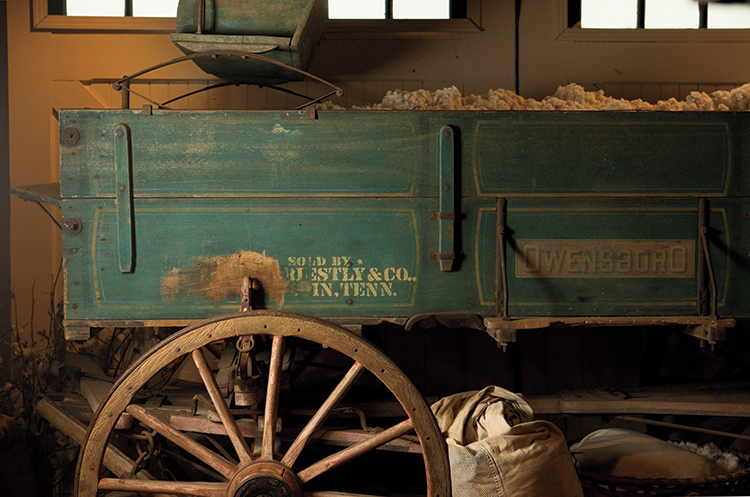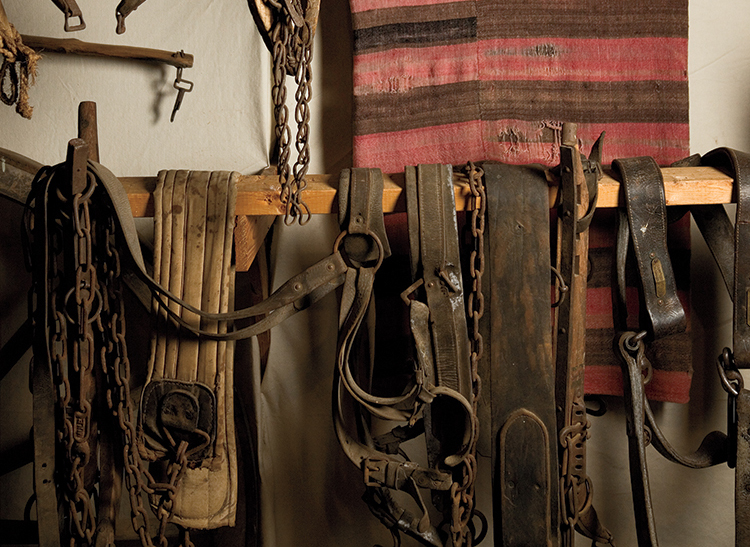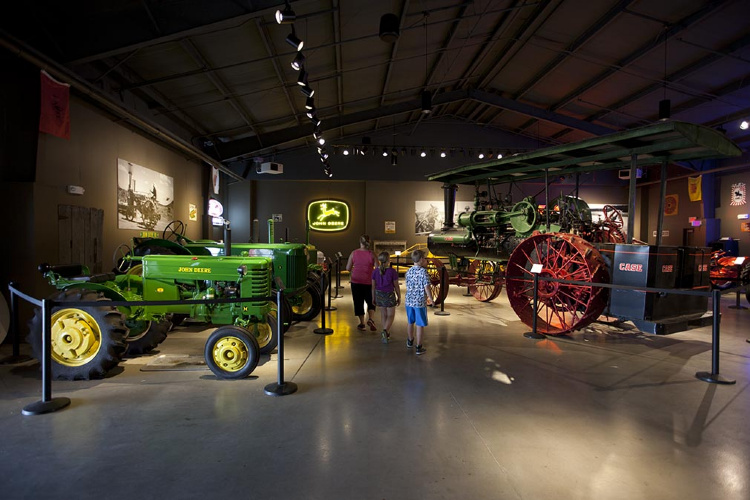Home > Tennessee > Tennessee Ag Education > Tennessee Ag Museums are Harvesting History
Tennessee Ag Museums are Harvesting History
In partnership with: Tennessee Department of Agriculture

With today’s fast-paced world of smartphones and social media, it’s hard to imagine a life without the convenience of instant results. But not long ago, Tennesseans were laying the foundation of the state’s agriculture industry from the ground up, sewing their own clothes, growing their own food and building shelter.
Several museums across the state are bringing that history to the forefront, teaching consumers about the beginnings of Tennessee agriculture and why it’s important to remember the past.
Tennessee Ag Museum
The Tennessee Agricultural Museum in Nashville teaches visitors about all aspects of agricultural history through engaging exhibits, events, nature trails, gardens and more. Located on the grounds of the Ellington Agricultural Center and managed by the Tennessee Department of Agriculture, the museum opened in 1979 and features everything from a one-room schoolhouse to farm equipment from the early 1800s. The museum welcomed two new staff members last year, museum director Gregory Phillipy and educational curator Elaura Highfield.
Tirri Parker, curator at the museum, says they saw approximately 22,280 visitors in 2014.
“Visitors enjoy about 3,000 19th- and early 20th-century artifacts, including special exhibits on dairy, blacksmith, textiles and more,” she says.
She adds the early beaver hat from Tennessee’s first hattery, a John Deere grain binder, the 1915 rural route mail buggy used until the 1940s, the large barn floor loom and a hand-turned cotton gin, among other sights, are not to be missed.
The museum hosts a number of annual educational events, such as Summer Saturdays, held each Saturday in July for families, and the Music & Molasses Festival, held on the third weekend of October.
Parker says these events and the museum help to bridge the knowledge gap between today’s youth, which is two generations removed from the farm, and the older generations.
“When visitors don’t realize you can’t milk a bull or that tomatoes begin as green and ripen to red, there’s a lot of work to do!”

West Tennessee Ag Museum
Delle Rhue Burgess, a member of the museum staff at the West Tennessee Ag Museum in Milan, agrees.
“I often ask young people if they feel prepared to provide for their families if they needed to,” she says. “Could they put food on the table and clothes on their backs? Most younger people don’t know how to survive like that.”
The West Tennessee Ag Museum opened in 1987 on the grounds of the University of Tennessee Research and Education Center, and Burgess has been there for 13 years. She says they try to teach and explain as much about agriculture as possible because agriculture is an extremely important part of everyday life.
“We’re here and available,” she says. “People just have to come visit.”
Admission to the West Tennessee Ag Museum is free, and guests will find a number of educational and fun exhibits. Burgess says the most popular varies from group to group.
“We deal with all ages from 4-year-olds to people who won’t tell you their age,” she says. “The younger kids really like our diorama display depicting settlers coming to the new land. When you’re 2 feet tall, it’s a huge, awesome scene.”
Teenage boys go crazy over the 1951 Chevy pick-up truck, and both teen and adult women love the domestic arts setting, which features spinning, weaving, sewing and more.
All in all, the more than 16,000-square-foot museum features more than 2,600 implements on display. “There’s a little something for everyone,” Burgess says.
Discovery Park of America
There’s even more to see in Union City at Discovery Park of America. The new museum opened in 2014 and features more than 70,000 square feet of fascinating exhibits focusing on nature, science, technology, history and art.
Among those exhibits, the settlement, the barn and Mill Ridge give visitors a glimpse at agriculture’s past. The bright red barn sits outside the main building, concluding the grounds tour, and apart from the Discovery Center itself, is the most visible building from the highway.
The barn features antique tractors and other machinery, depicting the history of farm machinery after the horse.
“We have about 25 antique tractors that have all been restored. They all work,” says Jim Rippy, CEO of Discovery Park.
The barn also houses antique combines, steam tractors and more. As visitors make their way to the settlement and Mill Ridge, they can experience life in the early 1800s, including dogtrot log cabin homes, a blacksmith’s shop, an authentic gristmill, and a historic seed house.
Rippy says though West Tennessee is a largely agricultural area, many people still don’t know about agriculture. They want to tell the history of farming.
As for the future, Discovery Park has big plans in regard to agriculture.
“We’ve planted a half-acre of grapes and hope to show how the fruit is grown, plus supply them to a winery in a few years,” Rippy says. He adds that they’re also in the development stages of a modern farming exhibit.
“Genetics and DNA are very important in today’s farming,” he says. “We teach a lot of history, which is important, but we want to show the future as well.”




